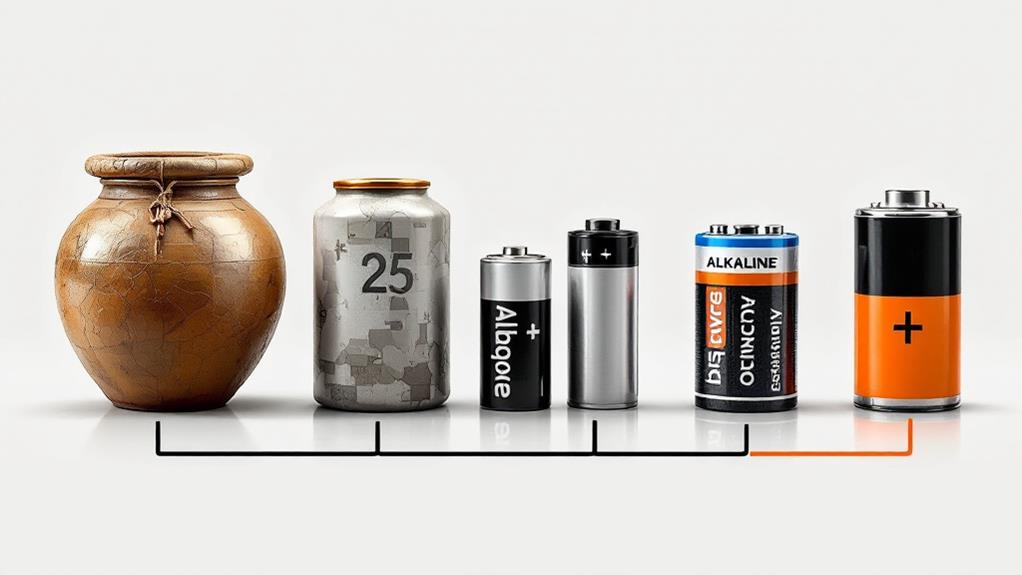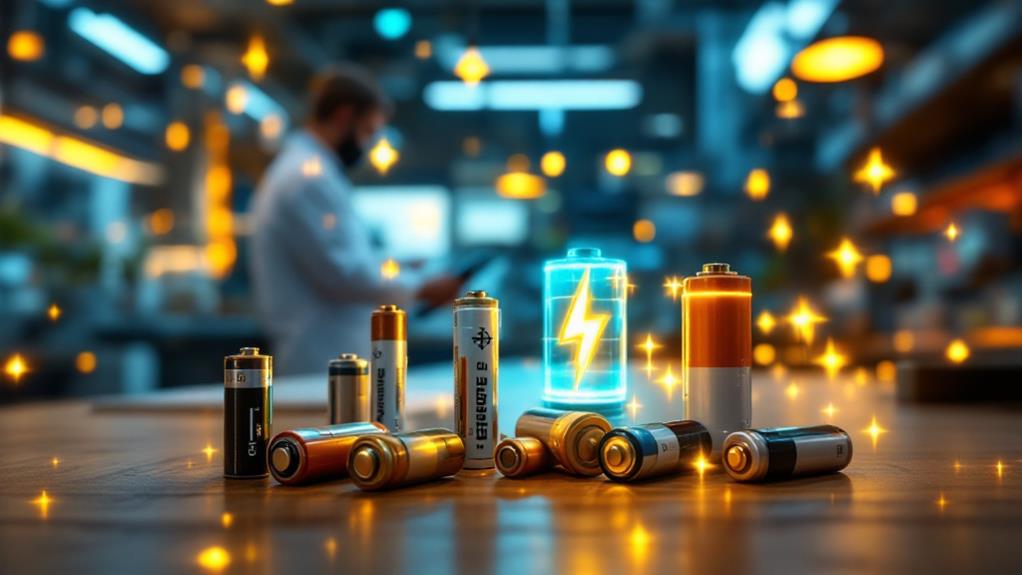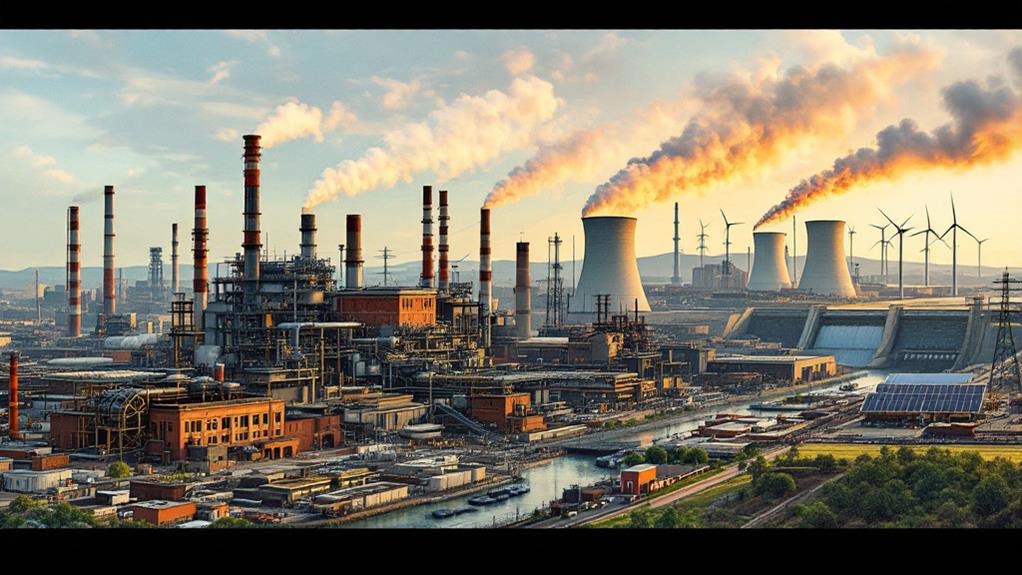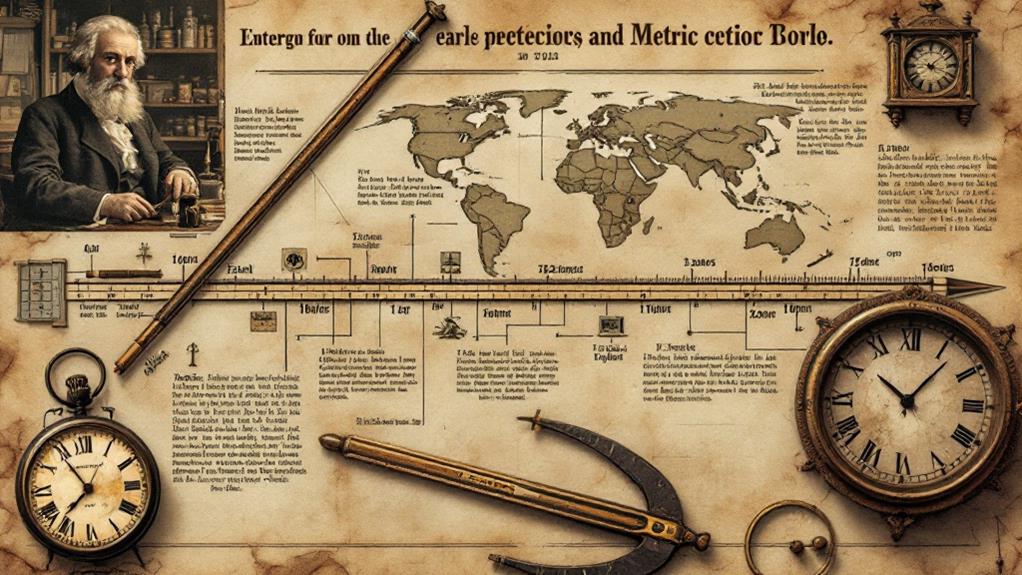The History and Rise of Robots: From Early Machines to Modern Automation
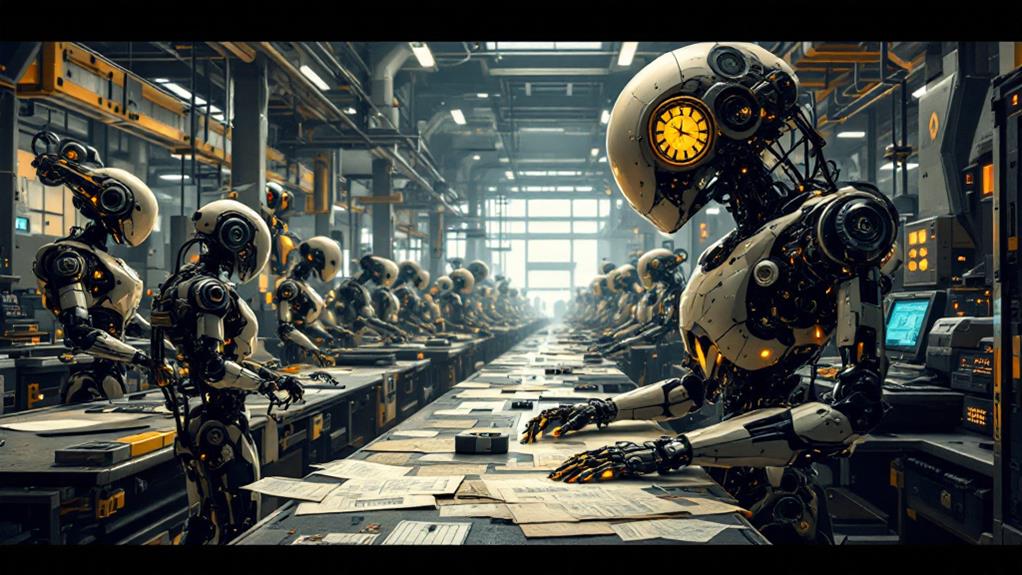
The history of robots stretches from ancient Greece's mythical automatons to today's AI-powered machines. You'll find early examples in mechanical puppets and clockwork mechanisms, which laid the groundwork for future innovations. The Industrial Revolution sparked significant advancements, leading to programmable robots and their adoption in manufacturing. As technology progressed, robots found their way into space exploration, healthcare, and military applications. Now, we're seeing the rise of social robots and companions, designed to interact with humans in various settings. The future promises even more exciting developments, from robotic exoskeletons to autonomous vehicles. Exploring this captivating expedition will reveal how robots have shaped our world.
Early Mechanical Automatons
Inventors and craftsmen have long been fascinated by the idea of creating mechanical beings that mimic human actions. As early as ancient Greece, you'd find stories of mythical automatons, hinting at humanity's enduring desire to craft life-like machines.
In the Middle Ages, mechanical puppets began to appear in Europe. These intricate devices, often used in religious displays or royal courts, showcased the growing sophistication of clockwork mechanisms. You'd see figures that could move their arms, nod their heads, or even play simple tunes.
The Renaissance saw a surge in the development of self-operating mechanisms. Leonardo da Vinci's notebooks reveal designs for a humanoid automaton, capable of sitting up and moving its arms. In the 18th century, Jacques de Vaucanson created his famous "Digesting Duck," which could flap its wings and appear to eat and digest food.
These early automatons weren't true robots as we know them today. They lacked the ability to sense their environment or make decisions. However, they laid essential groundwork for future developments in robotics, demonstrating the potential of mechanical systems to replicate human-like movements and actions.
Industrial Revolution's Impact
With the dawn of the Industrial Revolution, the scenery of automation underwent a dramatic alteration. You'd witness the emergence of steam-powered machinery and mechanized production lines, transforming the manufacturing landscape. These innovations laid the groundwork for more sophisticated robotic systems in the future.
As factories embraced automated processes, you'd notice significant socioeconomic consequences. The shift from manual labor to machine-driven procedures increased productivity and efficiency, but it also led to labor market disruptions. Many workers found their skills obsolete, forcing them to adapt or seek new employment opportunities.
You'd observe the birth of assembly lines, pioneered by Henry Ford, which revolutionized mass production. This approach not only accelerated manufacturing but also standardized product quality. The industrial sector's rapid growth spurred technological advancements, setting the stage for future robotic developments.
During this era, you'd see the seeds of modern automation being sown. The Industrial Revolution's impact on robotics was profound, establishing the foundational concepts and technologies that would evolve into the complex robotic systems we know today.
Birth of Programmable Robots
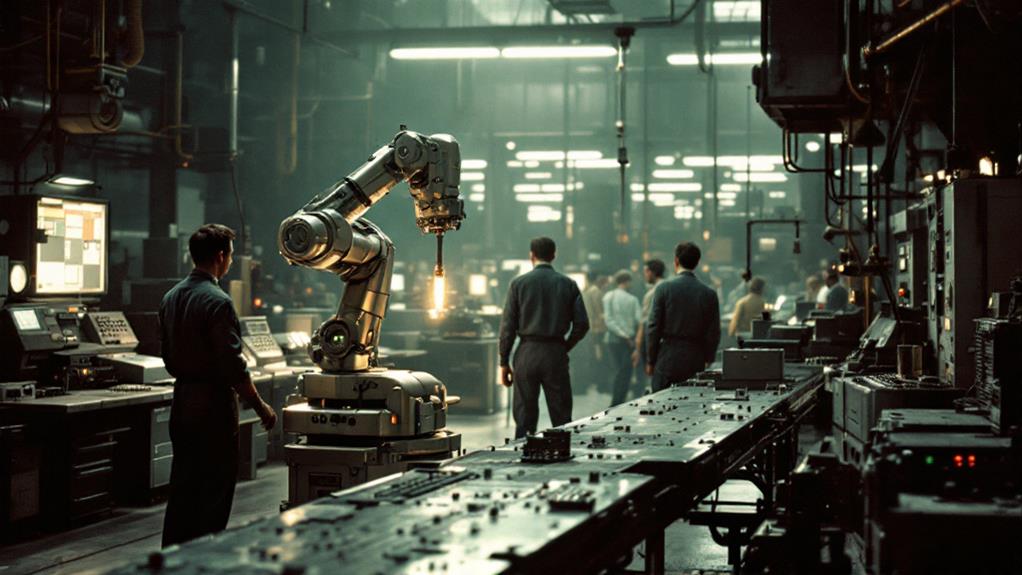
Innovation sparked the birth of programmable robots in the mid-20th century. You'll find that this era marked a significant shift in robotics, as engineers and scientists began developing machines capable of following predetermined sequences of operations. These advancements laid the foundation for modern automation and revolutionized industries worldwide.
The evolution of programmable robots can be traced through four key developments:
- Introduction of programmable control systems
- Advancements in embedded software development
- Integration of sensors and feedback mechanisms
- Refinement of robotic actuators and mechanics
You'll notice that programmable control systems allowed for more complex and adaptable robotic behavior. As embedded software development progressed, robots became increasingly sophisticated, capable of processing information and making decisions based on their environment. The integration of sensors and feedback mechanisms further enhanced their ability to interact with the world around them, while improvements in actuators and mechanics resulted in more precise and efficient movements.
These innovations paved the way for the versatile robots you see today in manufacturing, healthcare, and even your home. The birth of programmable robots marked a turning point in automation, setting the stage for the rapid advancements in artificial intelligence and robotics that continue to shape our world.
Robots in Manufacturing
The manufacturing sector quickly adopted programmable robots, revolutionizing production lines across industries. You'll find that these mechanical workers have become indispensable in modern factories, performing tasks with precision and speed that humans simply can't match. They've transformed factory automation processes, enabling 24/7 production and considerably reducing errors.
In the automotive industry, you'll see robots welding car frames, painting vehicles, and assembling intricate components. They've also made their mark in electronics manufacturing, where they place tiny components on circuit boards with incredible accuracy. Robotic material handling has streamlined warehouses and distribution centers, making inventory management more efficient than ever before.
As you investigate a modern factory, you'll notice robots working alongside human employees, each focusing on tasks best suited to their abilities. This collaboration has led to increased productivity, improved product quality, and enhanced workplace safety. While some feared robots would replace human workers entirely, they've actually created new job opportunities in robot maintenance, programming, and oversight. The rise of robots in manufacturing has ushered in a fresh era of industrial efficiency, forever changing the way we produce goods.
Artificial Intelligence and Robotics
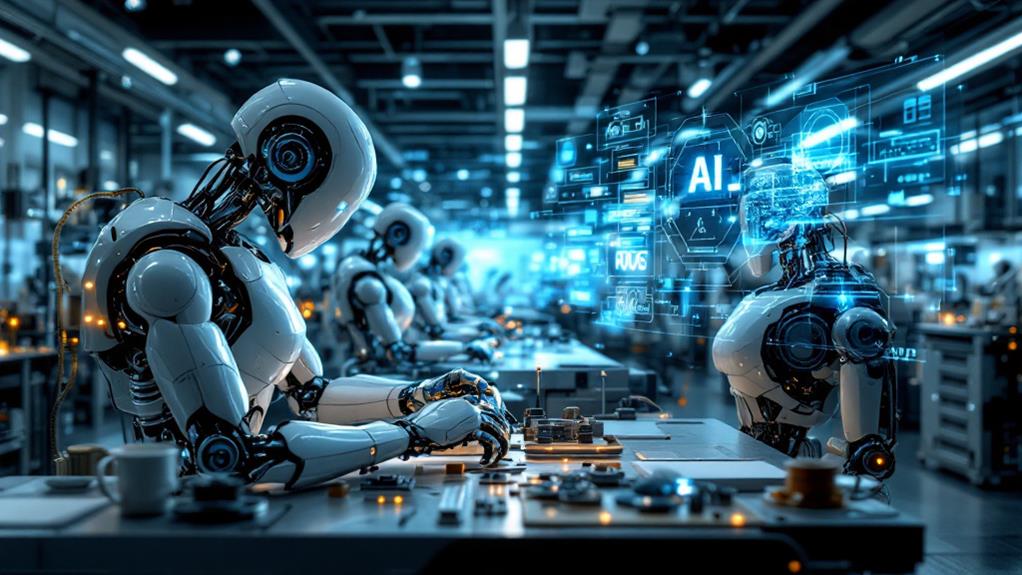
Artificial intelligence has revolutionized the field of robotics, elevating machines from simple programmed tools to adaptive, learning entities. You'll find AI-powered robots in various industries, from healthcare to manufacturing, making decisions and performing tasks with increasing autonomy. Machine learning algorithms enable these robots to analyze data, recognize patterns, and improve their performance over time.
The integration of AI and robotics has led to significant advancements in:
- Autonomous decision making: Robots can now process complex information and make choices without human intervention.
- Adaptability: AI-driven robots can adjust their behavior based on changing environments and tasks.
- Human-robot interaction: Natural language processing and computer vision allow for more intuitive communication between humans and machines.
- Problem-solving capabilities: Advanced AI algorithms enable robots to tackle complex challenges and find innovative solutions.
As you investigate the world of AI-enhanced robotics, you'll uncover that these machines are becoming increasingly sophisticated. They're not just following pre-programmed instructions but learning from experience and adapting to new situations. This convergence of AI and robotics is opening the door for more intelligent, versatile, and efficient machines that will continue to reshape our world.
Robots in Space Exploration
Frequently, robots play a vital role in space exploration, serving as our eyes, ears, and hands in the harsh environments beyond Earth. You'll find that interplanetary rovers, like NASA's Mars rovers, have revolutionized our understanding of the Red Planet. These sophisticated machines traverse Martian terrain, collecting data and samples that would be impossible for humans to gather directly.
Robotic space probes have ventured even further, reaching the outer edges of our solar system. You've likely heard of missions like Voyager and New Horizons, which have provided groundbreaking discoveries into distant planets and celestial bodies. These unmanned spacecraft carry advanced sensors and cameras, transmitting important information back to Earth.
Robots in space exploration offer several advantages over human astronauts. They don't require life support systems, can withstand extreme conditions, and can operate for extended periods. As technology advances, you'll see more complex and capable robots venturing into space, clearing the way for future human exploration and potentially even colonization of other planets.
Medical and Surgical Robots
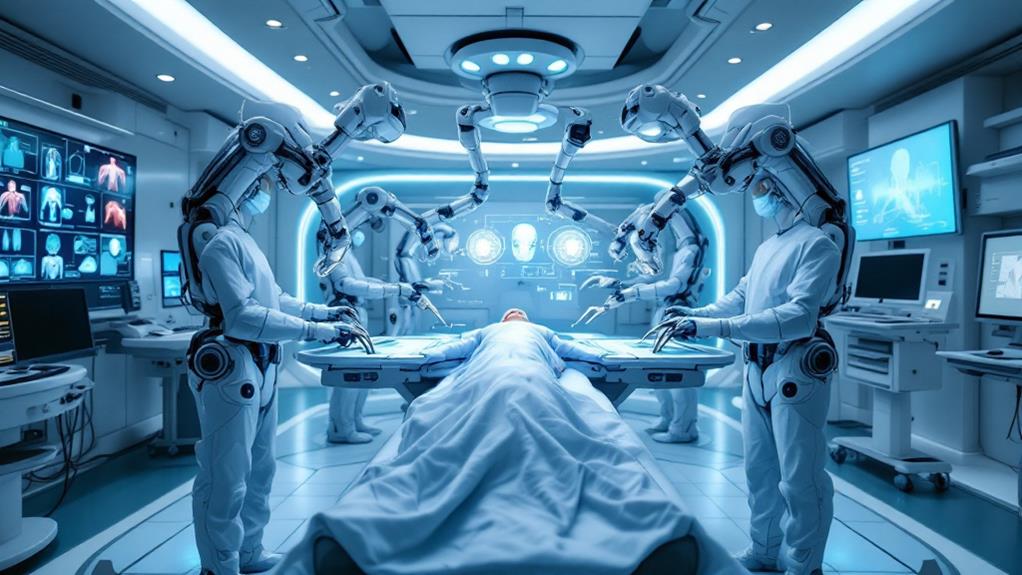
Innovation in medical technology has led to the rise of medical and surgical robots, revolutionizing healthcare as we comprehend it. You'll find these robots assisting in various medical procedures, from minimally invasive surgeries to complex operations. Robot-assisted surgery has become increasingly common, offering surgeons enhanced precision and control during procedures.
Here's how medical and surgical robots are altering healthcare:
- Improved accuracy: Robotic systems can perform movements with incredible precision, reducing the risk of human error.
- Minimally invasive procedures: Smaller incisions lead to faster recovery times and reduced complications for patients.
- Enhanced visualization: High-definition cameras and 3D imaging provide surgeons with detailed views of the surgical site.
- Reduced fatigue: Robots can assist in long, complex procedures, helping to prevent surgeon fatigue.
You'll also find robotic prosthetics making notable advancements in improving the lives of amputees. These advanced artificial limbs can respond to nerve signals, providing more natural movement and functionality. As technology continues to advance, you can expect to see even more integration of robotics in healthcare, from diagnosis to treatment and rehabilitation.
Military Applications of Robotics
The military sector has adopted robotics technology with open arms, revolutionizing warfare and defense strategies. You'll find robots playing indispensable roles in various military operations, from reconnaissance to combat. Unmanned aerial vehicles, or drones, have become essential for surveillance and targeted strikes, reducing risks to human personnel.
On the ground, you'll see robots assisting with explosive ordnance disposal and remote controlled demolition, keeping soldiers safe from potentially hazardous situations. These machines can traverse perilous terrain and detect hidden threats, such as landmines or improvised explosive devices.
Robotic exoskeletons are enhancing soldiers' physical capabilities, allowing them to carry heavier loads and move faster. You'll also find autonomous vehicles being developed for supply transport and even combat roles.
As military robotics continue to advance, you'll witness increased automation in decision-making processes and battlefield management. However, this raises ethical concerns about the role of artificial intelligence in warfare. The debate over autonomous weapons systems and their potential consequences is ongoing, highlighting the complex relationship between technology and military ethics.
Social Robots and Companions
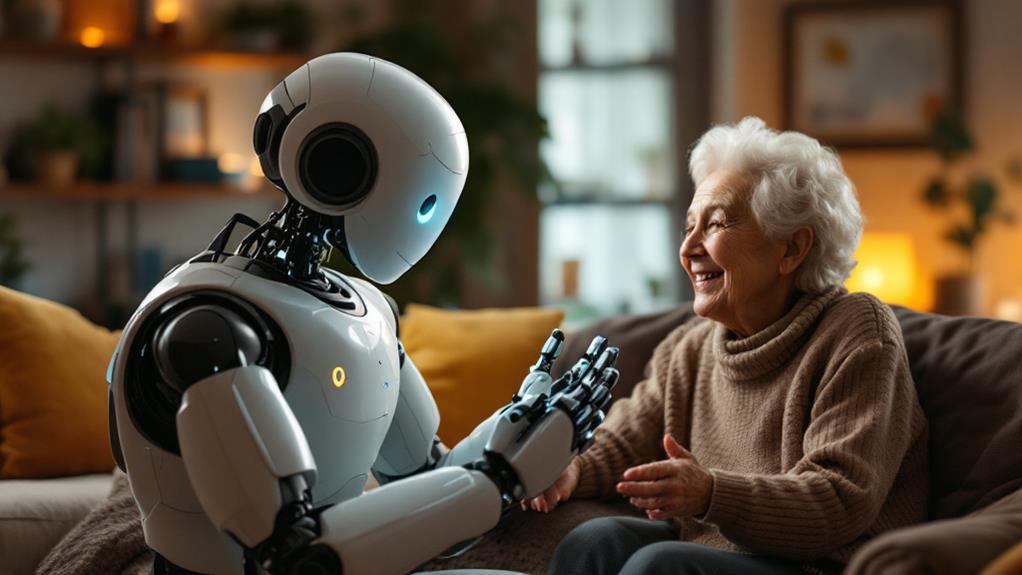
Social robots have emerged as a fascinating intersection of technology and human interaction. These sophisticated machines are designed to engage with humans in various social settings, from homes to healthcare facilities. They're equipped with social interaction capabilities that allow them to recognize faces, understand speech, and respond appropriately to human emotions.
As you investigate the world of social robots, you'll find that they're being developed for numerous purposes:
- Companionship for the elderly
- Educational tools for children
- Therapy assistants for individuals with autism
- Customer service representatives in retail and hospitality
These robots are increasingly incorporating emotional intelligence applications, enabling them to interpret and respond to human emotions more effectively. You'll notice that they can adapt their behavior based on the user's mood, making interactions feel more natural and personalized.
While social robots aren't meant to replace human relationships, they're proving beneficial in supplementing human care and attention. As technology advances, you can expect to see these companions becoming more sophisticated, with improved ability to understand the situation, learn from interactions, and provide meaningful support in various social scenarios.
Future Trends in Robotics
Pioneering developments in robotics are shaping a future that's both thrilling and revolutionary. You'll witness the rise of robotic exoskeletons enhancing human capabilities, enabling those with mobility issues to walk and assisting workers in physically demanding jobs. These wearable robots will reduce workplace injuries and improve productivity across various industries.
Autonomous delivery vehicles are set to transform logistics and transportation. You'll see drones and self-driving robots handling last-mile deliveries, reducing traffic congestion and emissions in urban areas. These innovations will streamline supply chains and provide faster, more efficient service to consumers.
As artificial intelligence continues to advance, you can expect robots to become more adaptable and capable of learning complex tasks. They'll work alongside humans in fields like healthcare, education, and scientific research, augmenting our abilities and freeing us to focus on creative and strategic work.
Ethical considerations and regulations will play a pivotal role in shaping the future of robotics. You'll need to grapple with questions of privacy, safety, and the impact on employment as robots become increasingly integrated into daily life.
